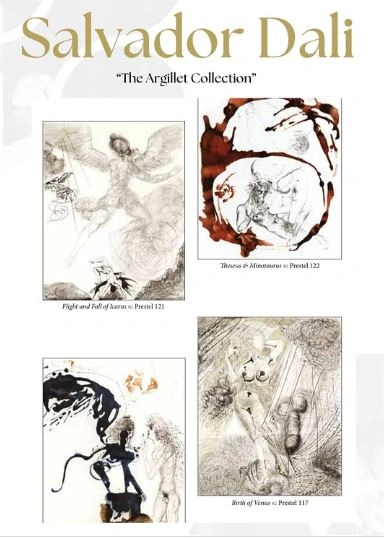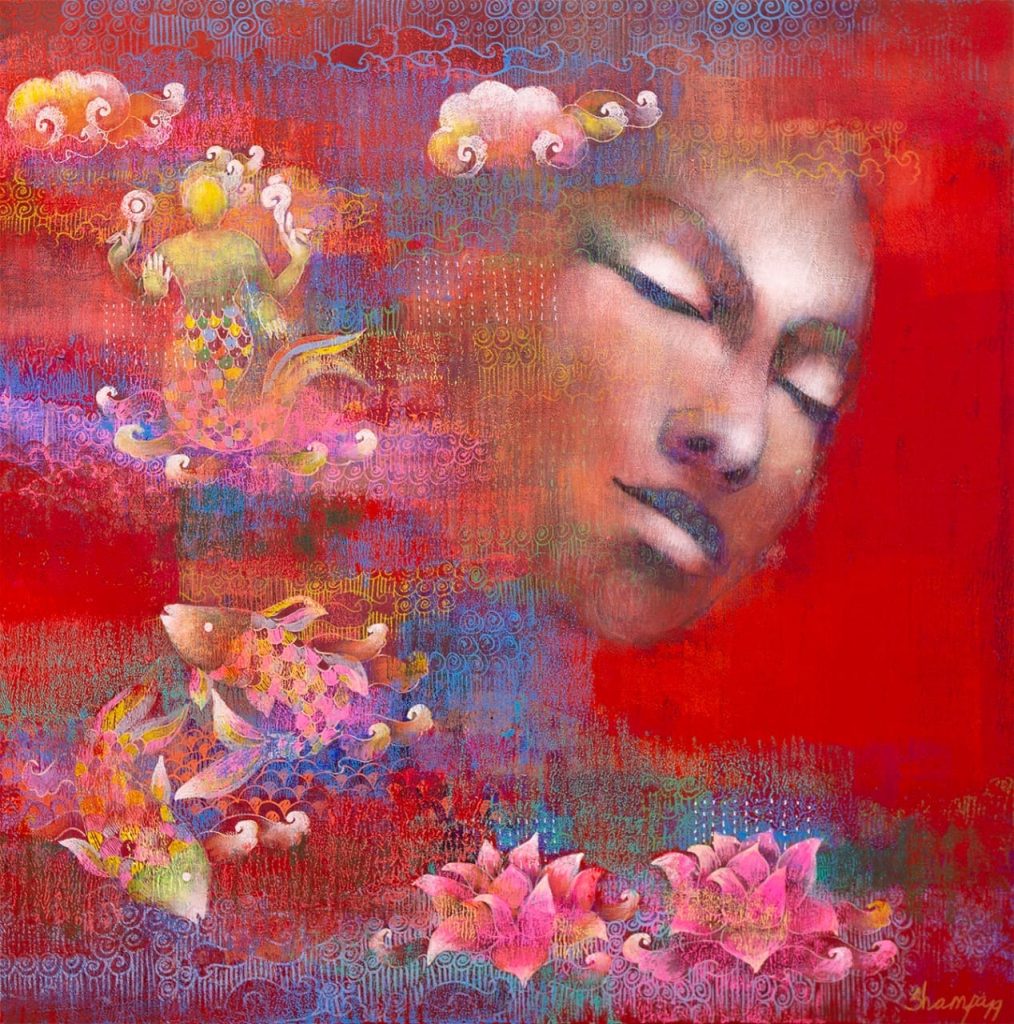The exhibition ‘Dali Comes to India’ was held at the India Habitat Centre from 7 February to 13 February and later displayed at Masarrat Gallery by Bruno Art Group from 15 February to 16 March.
Salvador Dalí, the renowned Spanish surrealist artist, has made a striking debut in India. “Dalí Comes to India,” a captivating exhibition featuring over 200 of his works, is currently on display in New Delhi. This collection, owned by Christine Argillet, daughter of Dalí’s close friend and publisher Pierre Argillet, offers a unique glimpse into the artist’s fantastical world and his fascination with Eastern mysticism, particularly how it was perceived in the West during the 1960s and 70s. The exhibition showcases a range of Dalí’s original sketches, etchings, and watercolours, providing rare insight into his creative process.
Born in Spain in 1904, emerged as an artist amidst the avant-garde movement and the turmoil of two world wars. Influenced by figures like Pablo Picasso, Joan Miró, and André Breton, he found his artistic home in Surrealism, a movement defined by Breton as “thought dictated in the absence of any control exercised by reason.” Dalí was particularly captivated by Sigmund Freud’s psychoanalytic theories, especially the exploration of the link between dreams and repressed desires. Consequently, his art possesses a dreamlike quality, infused with free association and visceral imagery that evokes subconscious fears and forbidden longings.
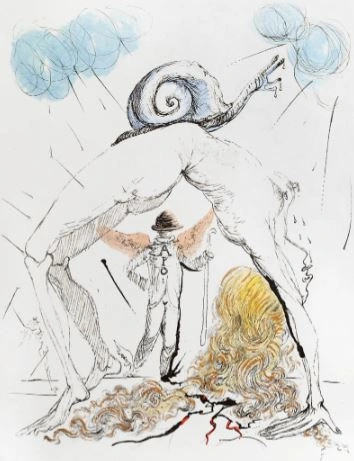
Venue
This exhibition, which initially opened at the Visual Arts Gallery, India Habitat Centre, and has now moved to Massarrat by Bruno Art Group in GK-2, marks the culmination of a five-year project by the Bruno Art Group. Each piece has been meticulously authenticated, ensuring visitors experience the brilliance of Dalí’s artistic vision. Two of Dalí’s colour etchings are housed at India’s Victoria Memorial Hall in Kolkata, along with his whimsical Air India ashtrays, this exhibition represents the first substantial showcase of his broader body of work in the country.
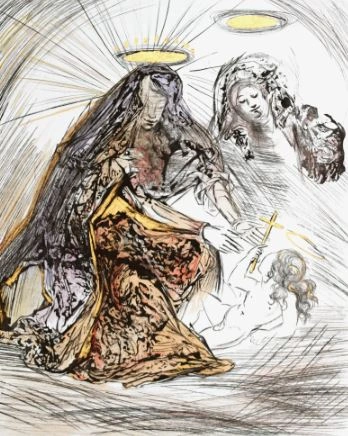
The East, Mysticism and Dali
A recurring theme in the exhibition is Dalí’s fascination with India—specifically, the romanticized Western perception of Indian mysticism popularized during the hippie era. Several sketches are directly inspired by photographs taken by Pierre Argillet during his travels in India in the 1970s. While familiar elements like elephants and temples are present, they are woven into Dalí’s signature surrealist style, inviting viewers to interpret their meaning within his dreamlike imagery. Imagine, for example, an elephant’s trunk morphing into a melting clock, or a temple reflected in an oversized, tear-shaped eye: these are the types of visual riddles Dalí presents.
The exhibition offers a fascinating glimpse into his subconscious. Humanoid figures bloom into flowers, eyeballs wiggle and dance, and dismembered body parts interact with their surroundings in strange yet captivating ways. “You can peel an onion all your life and always find something beautiful in it,” Christine Argillet aptly observes, “Just like the art of Dalí.” The more one contemplates his works, the more connections and potential interpretations emerge, creating a deeply personal and engaging experience. In Flower Woman at the Piano, for example, a female figure merges seamlessly with the instrument, suggesting a link between the feminine essence—perhaps creativity itself—and its tangible expression. Similarly, The Bust, a sculptural piece, depicts a human head transformed into a vessel, concealing the thoughts and emotions within. When asked about bringing the collection to India, Christine Argillet explained that Dalí had a profound interest in the mystical quest for the Orient and the interplay between Eastern and Western cultures. She expressed her desire to showcase this mutual fascination.
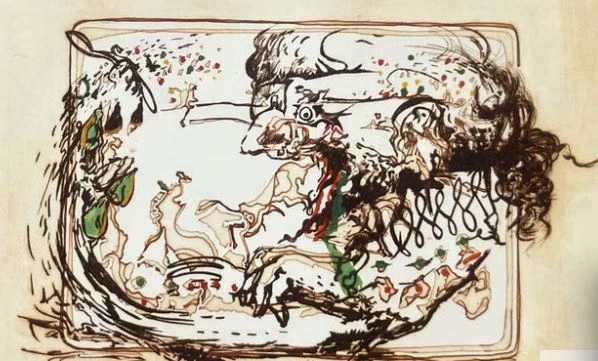
‘Dali in Delhi’- Details of the Exhibition
Beyond his iconic melting clocks and surreal dreamscapes, the exhibition delves into the breadth of Dalí’s creative explorations. The etchings created for Les Chants de Maldoror, for instance, expose darker and more unsettling aspects of the human psyche. Inspired by the provocative poetry of Comte de Lautréamont, these works grapple with themes of violence, perversion, and the rejection of conventional morality. Pieces like Memory of Music, Fragmented Body, Desire of Softness, and The Seizure of Life probe the disturbing and the taboo. The unsettling imagery—from tree trunks adorned with human limbs to sewing machines juxtaposed with human figures—demonstrates Dalí’s ability to externalize his anxieties and inner turmoil. In Desire of Softness, a melting, pliable figure contrasts starkly with a hard, angular rock, highlighting the interplay between vulnerability and resilience.
The exhibition also features Dalí’s interpretations of Greek myths, such as Oedipus and the Sphinx, Leda and the Swan, and Medusa and Saturn. These works exemplify his “paranoiac-critical method,” where he begins with an abstract form and allows the image to develop organically. His Saturn, a haunting depiction of the Titan Cronus devouring his children, evokes Goya’s renowned painting while simultaneously imbuing it with Dalí’s unique surrealist vision. The Sphinx is transformed into a more ambiguous and alluring figure, and Oedipus and the Sphinx become a Freudian interpretation of the Oedipus complex.
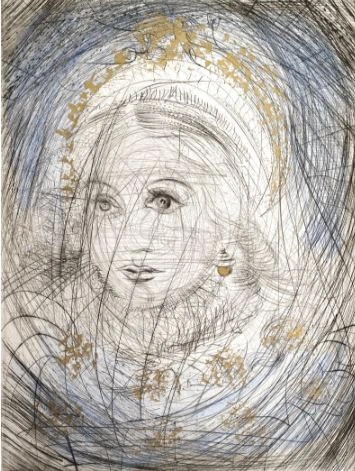
A significant portion of the exhibition comprises etched plates inspired by Apollinaire and “Secret Poems.” These initially strange compositions, originally intended for Georges Brassens’ songs, take on a surreal and bizarre quality, bearing titles like Woman at Fountain (depicting ants crawling on her body) and The Drawers (an open drawer seemingly devouring a guitar). One might speculate that the ants in Woman at Fountain symbolize the anxieties and irritations we endure, while The Drawers could represent the compartments of our minds, where repressed desires and certain memories reside.
Dalí’s illustrations for Goethe’s Faust, particularly the “Walpurgis Night” scenes, showcase his remarkable technical skill. His unconventional use of tools like roulettes, rubies, and diamonds lends an unusual delicacy to these etchings. This series includes The Woman with Pig, a grotesquely humorous image reminiscent of Walpurgis Night celebrations. The pig, symbolizing gluttony and base instincts, creates a disturbing yet wickedly funny scene.
Other works on display include Dalí’s interpretations of Byron’s Don Juan, the haunting Le Banquet, and a disturbing image of a skull emerging from a figure at a banquet table. Single copper etchings from the 1960s and 70s, such as Le Vitrail, reflect Dalí’s preoccupation with mortality and the fleeting nature of life. Using the visual motif of a stained-glass window—often associated with churches and spirituality—Le Vitrail frames a tableau of decay and mortality, emphasizing the transience of human existence.
While the exhibition focuses on Dalí’s works on paper, it effectively captures his recurring themes, techniques, and perspectives. However, the inclusion of works by Yigal Ozeri and Dr. Gindi, though perhaps intended to complement Dalí’s work, risks diluting the exhibition’s focus.
“Dalí Comes to India” is more than just an art exhibition; it’s an immersive journey into the mind of a genius. It offers a chance to explore the multifaceted layers of Dalí’s personality, his obsessions, and his unique worldview. From seasoned art enthusiasts to those curious about surrealism, this exhibition is a must-see for anyone willing to delve into the dreamscapes of Salvador Dalí. Massarrat’s continued presentation of the exhibition offers a valuable opportunity to re-experience this surreal symphony, a rare opportunity for one and all.

Contributor

